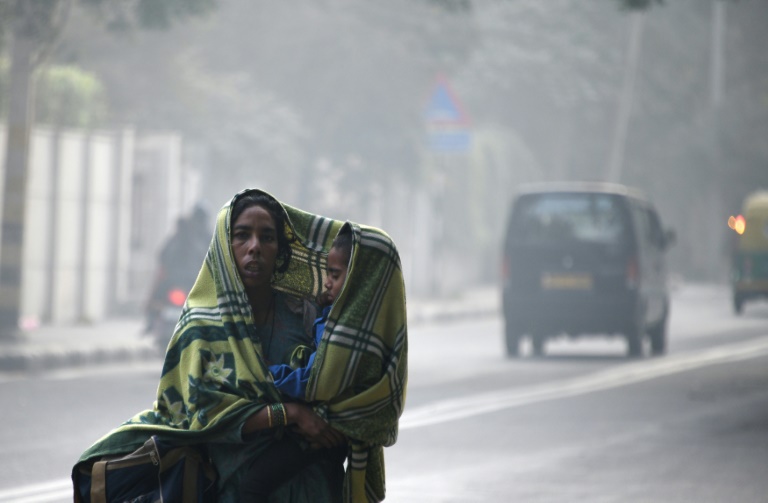As New Delhi and other major cities hit new toxic smog peaks, the United Nations sounded the alarm Wednesday over the damage that pollution is doing to babies' developing brains.
The UN’s children’s agency, UNICEF, said Asia accounts for more than 16 million of the world’s 17 million infants aged under one year living in areas with severe pollution — at least six times more than safe levels.
India topped the list of countries with babies at risk, followed by China, UNICEF said in a report.
Satellite imagery used to assess pollution levels around the world found that South Asian countries accounted for 12.2 million of the total number of affected children but that there is also a growing problem in African cities.
Air pollution has already been linked to asthma, bronchitis, and other long-term respiratory diseases.
“But a growing body of scientific research points to a potential new risk that air pollution poses to children’s lives and futures: its impact on their developing brains,” UNICEF said.
The report highlighted links found between pollution and brain functions “including verbal and nonverbal IQ and memory, reduced test scores, grade point averages among school children, as well as other neurological behavioural problems.”
“As more and more of the world urbanises, and without adequate protection and pollution reduction measures, more children will be at risk in the years to come.”
– ‘Danger in the air’ –
The ultra-fine particles in city pollution can damage the blood-brain barrier — a delicate membrane that protects the brain from toxic substances.
Damage to the membrane has been linked to Alzheimers and Parkinson’s disease in the elderly.
UNICEF also highlighted the growing risk from minute particles of the iron ore magnetite which is increasingly found in urban pollution.
The nano-particles, which easily get into the blood stream, are highly dangerous to the brain because of their magnetic charge and have also been linked to degenerative diseases.

Delhi shut all primary schools on November 8 as pollution levels hit nearly 30 times the WHO’s safe level
The author of the “Danger In The Air” report, Nicholas Rees, told AFP that toxic pollution is “impacting children’s learning, their memories, linguistic and motor skills.”
Delhi closed schools in early November after doctors declared a public health emergency, but quickly reopened them — provoking anger from parents who accused authorities of “playing with children’s health”.
The crisis saw large swathes of north India and parts of neighbouring Pakistan blanketed in acrid air — an annual phenomenon as cooler air traps particles near the ground, cause pollution levels to spike.
In China, where air pollution has cut life expectancy in the industrial north by three years, the government has imposed production curbs on industry to counter a smog crisis that rivals India’s — but progress has been patchy.
UNICEF urged more efforts to cut pollution, and also to reduce children’s exposure to the poisonous smog which has frequently reached hazardous levels in Indian cities in recent weeks.
It called for a greater use of masks, air filtration systems and for children to avoid travelling when pollution levels are at their highest.
Rees said masks help “but very importantly they have to have good filters and they also have to fit children’s faces well. A mask that does not fit the face well won’t work.”






